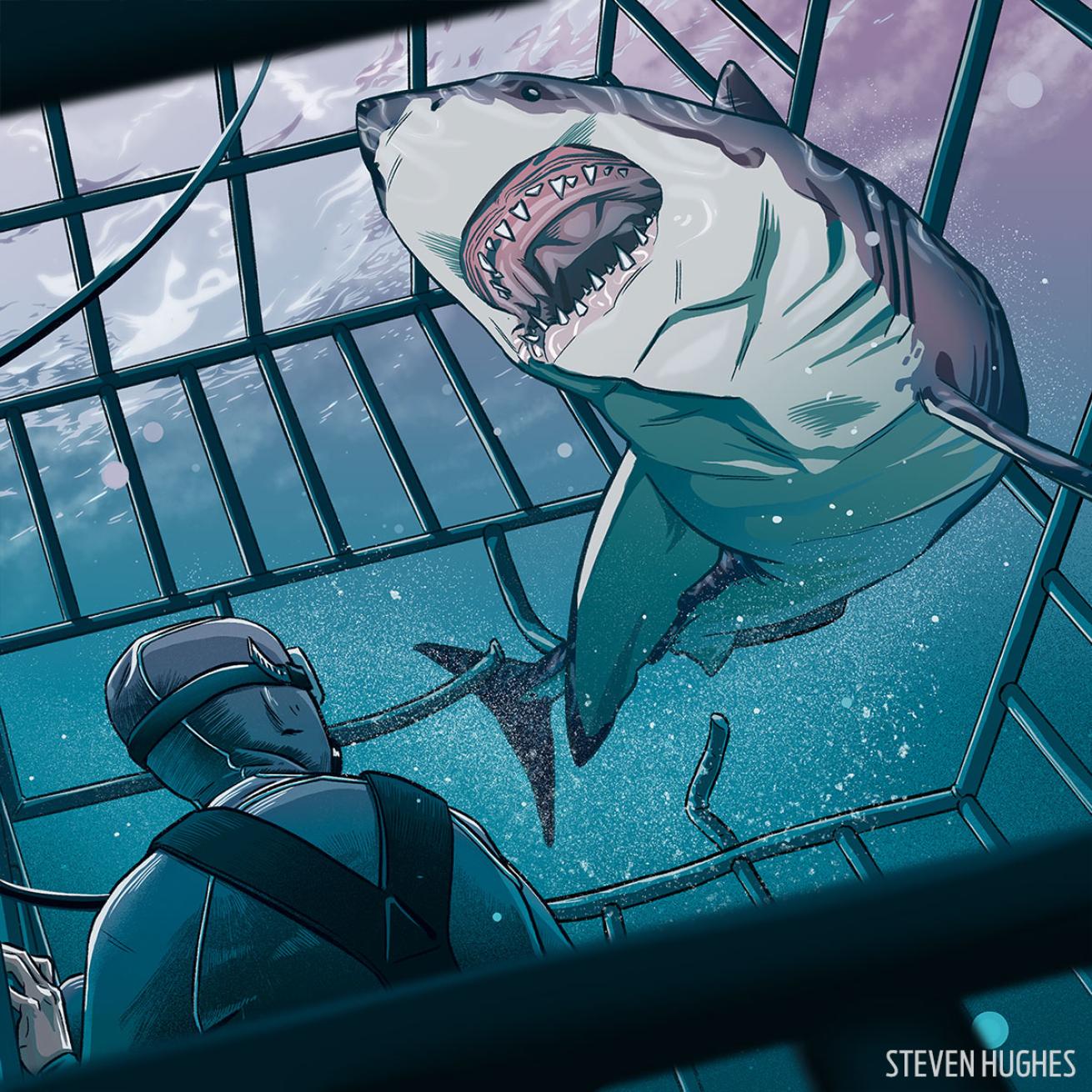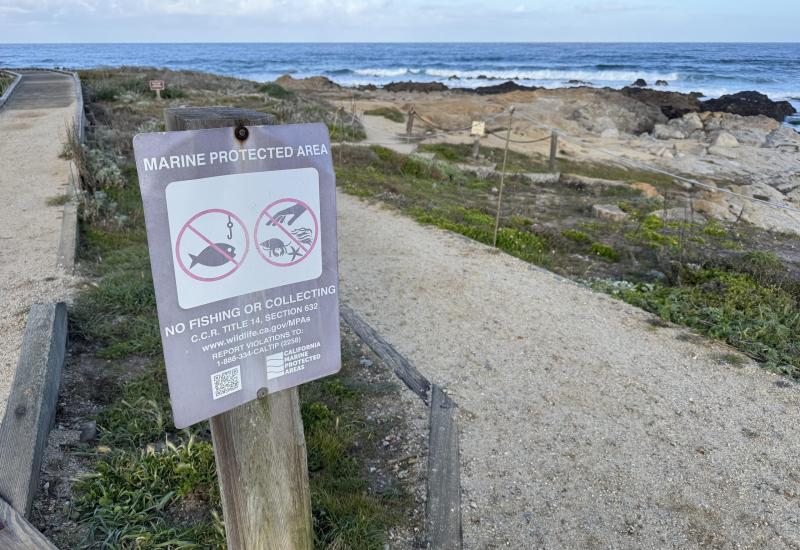What It’s Like When The Shark Gets In The Cage
I am the only person in the cage. My focus is on my camera and what is approaching from the blue waters of Guadalupe Island, Mexico. Then I feel it: a heavy wall of water pushing down on me. The force sends me to my knees on the left side of the cage.

Steven Hughes"Then I feel it: a heavy wall of water pushing down on me. The force sends me to my knees on the left side of the cage."
I am face to face with a great white. For two or three seconds, I just stare. I am telling him, Hey, buddy, you don’t want to be in my cage....
But it’s too late. The 12-foot shark is already inside. He can’t move backward, so he struggles, thrashing. It’s all he can do. In that moment, I don’t have time to be frightened. At this point, my rescue diver training starts to kick in. I know that if you have a diving accident, then you need to stop. You need to think how to rescue yourself. Slow down and control your breathing. I’m a master scuba diver trainer, so I teach this stuff. I’d better know it. And I had better start doing it.
With my hand, I push the shark a little bit. I’m not wearing a BC because this is hookah-style diving — surface-supplied air — but I do have on a harness with weights. Then, bang!
I hear someone on the surface open the metal gate on top of the cage. I look up and realize the cage is empty. I’m alone again. I catch my breath. Later that evening after the accident, I see the cage. I see broken bars. Over dinner, the other divers ask me one by one if I’m OK. I tell them, “Accidents happen.” Because they do.
I know I’m lucky. Not because I didn’t get hurt, but because I had training that prepared me to handle, well, anything. And besides, I just had a front-row seat to something most people will never get the chance to witness.
The next morning, I’m the first one back in the cage.










